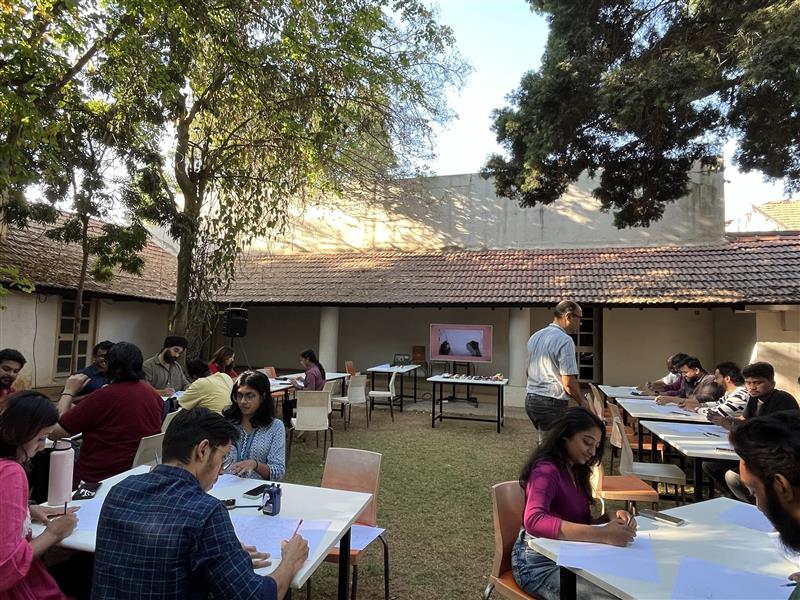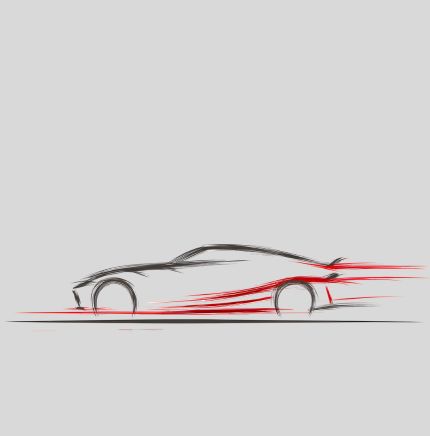Executive Summary
The "I Sketch, Therefore I Am!" workshop, helmed by Ajay Disley, provided an engaging exploration of sketching, cross-disciplinary design, and the ever-evolving world of mobility. Participants honed their sketching skills and discovered how diverse design approaches are revolutionizing both mobility and product design. A key highlight was a hands-on activity challenging attendees to envision the future of the Tata Nano, followed by a demonstration of using AI to transform sketches into compelling graphic designs.
Introduction to Mobility and Design
Mobility is more than just getting from point A to point B; it's about independence, freedom, and the human desire to explore. This yearning drives countless design expressions, from the simplicity of a bicycle to the complexity of modern SUVs. As Ajay Disley pointed out, this quest for movement is deeply woven into the fabric of our transportation systems, constantly evolving to meet societal needs and leverage technological advancements.
The automotive industry, in particular, stands as a dynamic and intricate sector. From the earliest horseless carriages to today's high-tech vehicles, the industry has undergone massive transformations. Factors like aerodynamics, mass production techniques, and shifting consumer preferences have all played a role. Iconic vehicles like the Volkswagen Beetle and the innovative minivan concept showcase how design adapts to fulfill diverse needs, from personal transport to family hauling.

The Power of Sketching: Visualizing the Future
Sketching isn't just doodling; it's a vital tool for designers to translate abstract ideas into tangible concepts. It serves as a visual bridge, connecting imagination and reality, allowing for exploration of form, proportion, and functionality. In the realm of mobility, sketching is indispensable. It enables designers to tackle spatial and cognitive challenges inherent in vehicle design, such as optimizing occupant space, strategizing powertrain placement, and maximizing visibility.
Workshop Activity: Sketching the Future of the Tata Nano
A major highlight of the "I Sketch, Therefore I Am!" workshop was a hands-on sketching activity. Participants started by observing various miniature car models, focusing on different shapes, lines, and proportions. This exercise aimed to sharpen their observational skills and get their creative juices flowing.
The core challenge was then presented: envision and sketch a futuristic version of the Tata Nano. Participants were encouraged to let their imaginations run wild, considering evolving urban landscapes, sustainability concerns, and emerging technologies. The goal was to create innovative designs that captured the essence of the Nano while pushing the boundaries of what's possible.
Cross-Disciplinary Approaches: A Holistic Design Philosophy
Modern design demands a holistic, cross-disciplinary approach. In mobility, this means integrating insights from various fields – engineering, user experience, environmental science, and even psychology. Understanding human behavior, for example, informs how vehicle interiors are designed to meet user needs, while engineering expertise ensures designs are structurally sound and energy-efficient.
The workshop emphasized the value of collaboration between disciplines like service design, product design, and engineering. By combining these perspectives, designers can craft more sustainable and user-focused mobility solutions. This collaborative spirit sparks innovation, leading to groundbreaking ideas that wouldn't emerge from a siloed approach.
From Sketch to Screen: AI-Powered Design
The workshop took an exciting turn when Ajay Disley demonstrated how AI can transform hand-drawn sketches into polished graphic designs. Using specialized software, participants' sketches of the futuristic Tata Nano were scanned and imported. The AI software then interpreted the lines, shapes, and forms of the sketches, generating detailed renderings with enhanced visual appeal. This process showcased the potential of AI as a powerful tool for designers, allowing them to quickly iterate on ideas, visualize concepts in different styles, and create professional-quality graphics from simple hand-drawn sketches.
Key Aspects of Vehicle Design
Vehicle design encompasses a range of critical considerations:
- Packaging: Arranging the vehicle's components – occupants, powertrain, and controls – to maximize space and functionality.
- Form and Surface Creation: Crafting the vehicle's exterior to be both aesthetically pleasing and aerodynamically efficient.
- Detailing: Refining the materials, textures, and finishes to create a premium user experience.
Challenges and Opportunities in Mobility Design
The mobility sector is rife with challenges like environmental impact, technological disruption, and shifting consumer expectations. However, these challenges also unlock incredible opportunities for innovation. The shift towards electric vehicles and autonomous driving requires designers to completely rethink traditional design approaches, integrating new technologies while prioritizing safety and user acceptance.
Looking Ahead: The Future is in Our Hands (and Sketches)
Designers will be at the forefront of shaping the future of transportation. By embracing sketching as a core skill, fostering cross-disciplinary collaboration, and leveraging technological advancements like AI, they can tackle the emerging challenges and create innovative solutions.
We can anticipate a greater focus on sustainable mobility – electric vehicles, advanced public transit, and micro-mobility solutions. Designers will need to balance environmental responsibility with user-centric design, creating vehicles that are both eco-friendly and desirable. The rise of autonomous vehicles will also revolutionize interior design, prioritizing comfort, entertainment, and flexible space utilization.
Conclusion
The "I Sketch, Therefore I Am!" workshop served as a powerful reminder of the importance of sketching and cross-disciplinary thinking in the dynamic world of mobility design. By nurturing creativity, encouraging collaboration, and exploring the potential of AI, designers can pave the way for innovative and sustainable transportation solutions. The future of mobility is not just about technology; it's about human-centered design that enhances our lives and protects our planet.
Author
Associate Manager-Business Strategy & Operations
Tata Elxsi




